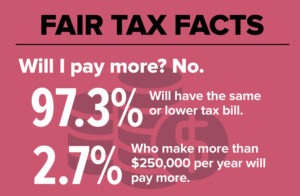March 16, 2011; Source: Star-Tribune | As we’ve written before in these pages, a tax credit – a dollar for dollar deduction from taxes owed – is a lot more attractive to donors than a charitable tax deduction that simply reduces one's taxable income. (See our newswire on Arizona's tax credit program for schools.)
Minnesota has a tax credit program that gives angel investors a 25 percent tax credit for investments of at least $10,000 to a registered Minnesota start-up company. Based on that 25 percent, investors got $7 million in tax credits for $28 million invested in 67 Minnesota start-up companies (only 6 in "outstate" Minnesota, the rest in the St. Paul/Minneapolis area). The tax incentive ostensibly spurred investors to make the investments, but obviously these angels could get returns on their investments, both the tax credit and non-tax credit parts, if the businesses succeed.
Sign up for our free newsletters
Subscribe to NPQ's newsletters to have our top stories delivered directly to your inbox.
By signing up, you agree to our privacy policy and terms of use, and to receive messages from NPQ and our partners.
What did the $7 million in foregone tax revenues achieve? Forty-seven jobs. That's $148,936 in foregone tax revenues per job. Minnesota officials said that the value of the tax credits needed to be measured over the long term, not just on the 47 jobs created immediately. Over the long run, more jobs might be created in these 67 start-ups, but also some of the 47 jobs might disappear as the fortunes of the companies wax and wane.
The use of tax credits to induce capital flows into particular social or economic issues is proliferating at the federal and state levels. The attraction of tax credits makes them sort of like supercharged charitable donations. Do tax credits compete with and draw from what donors might give as charitable contributions to 501(c)(3)s (expecting tax deductions rather than tax credits)? Is the impact of state tax credits different than the impact of federal tax credits? If the Minnesota program ends up with job creation at $150,000 per job, is that a success, a failure, or not the right indicator at all?—Rick Cohen












